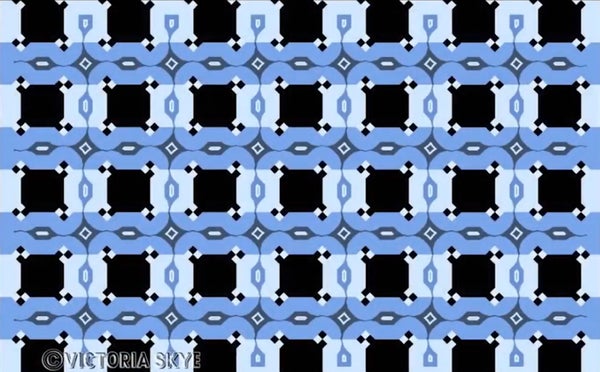This article was published in Scientific American’s former blog network and reflects the views of the author, not necessarily those of Scientific American
Illusions fascinate us all. They show us where our brains perceive the world differently from the physical reality and from our expectations of how the world should be. Here I will describe a bit of the science behind each of the new illusions in the 2017 edition of the Best Illusion of the Year Contest. You can vote on these illusions now through tomorrow at 4pm! http://illusionoftheyear.com/vote/
In the Skye Blue Café Wall Illusion, above, Victoria Skye builds on the previous insights of the famous illusionists Richard Gregory and Akiyoshi Kitaoka, to show that or perception of rectilinear lines is a matter of opinion. You determine whether edges are parallel through a brain circuit that uses the lightness and darkness of edges to help establish the relative orientation of the lines. Presumably this is because your brain relies a lot on shadows to see where objects lie, and how they interact with the surfaces around them. So here, when Skye throws in a series of white/black diamonds at key transitions between surfaces, this causes havoc in the brain circuits, leading to misrepresentation—in perception—of the position and angles of the edges.
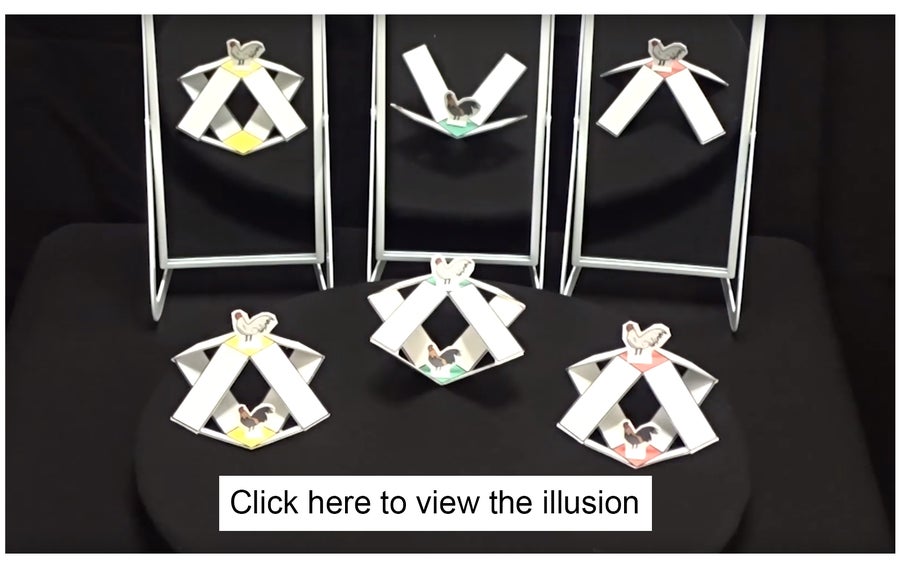
Credit: Kokichi Sugihara
On supporting science journalism
If you're enjoying this article, consider supporting our award-winning journalism by subscribing. By purchasing a subscription you are helping to ensure the future of impactful stories about the discoveries and ideas shaping our world today.
Here Kokichi Sugihara, a past champion of the contest, schools us all in the critical nature of perspective with this amazing forced-perspective illusion. We see three similar objects on the table—or do we? In the mirrors behind each object we see that each object is very different than the others, in amazing ways (and note: this is no photographic trick… it would look the same if you witnessed this live). By turning the tables on our mind we see how its done. Each object is partially made by the 3D structure it represents, and partially by anamorphic drawing that only looks like 3D structure when viewed from a specific perspective. The lesson is that, if you can be fooled by something as primary as your visual system, then your cognitive perspectives about many aspects of your life can be misinterpreted too.

Credit: Joel Ydring
The TILLA at the Beach illusion is also a great demonstration of forced perspective, now flowing from the original Ames Illusion. A loving father plays with his daughter at the beach, and makes the family movie of a lifetime by creating a title scene that is larger than life. Its only when we see the tyke run through her own name that we see that our forced perspective is required to see the letters for what they represent to Tilla’s dad.
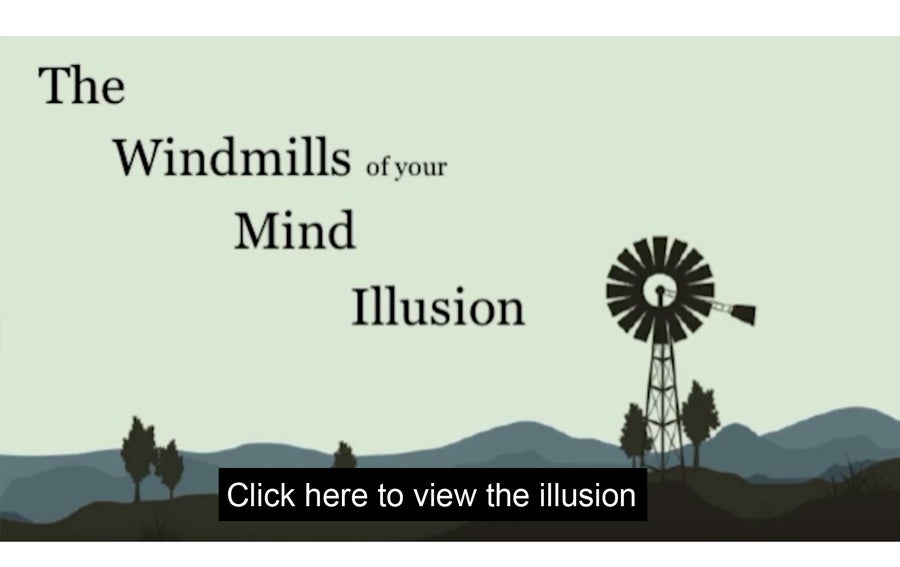
Credit: Michael Pickard and Gurpreet Singh
The Windmills in Your Mind Illusion shows that the direction of perceived motion in a movie depends on how the elements of motion are grouped by the mind. So a rigid rotating field of dots can appear to have elements rotating in both directions simultaneously, depending on the spacing between the dots, and this the perception of each dots immediate history.
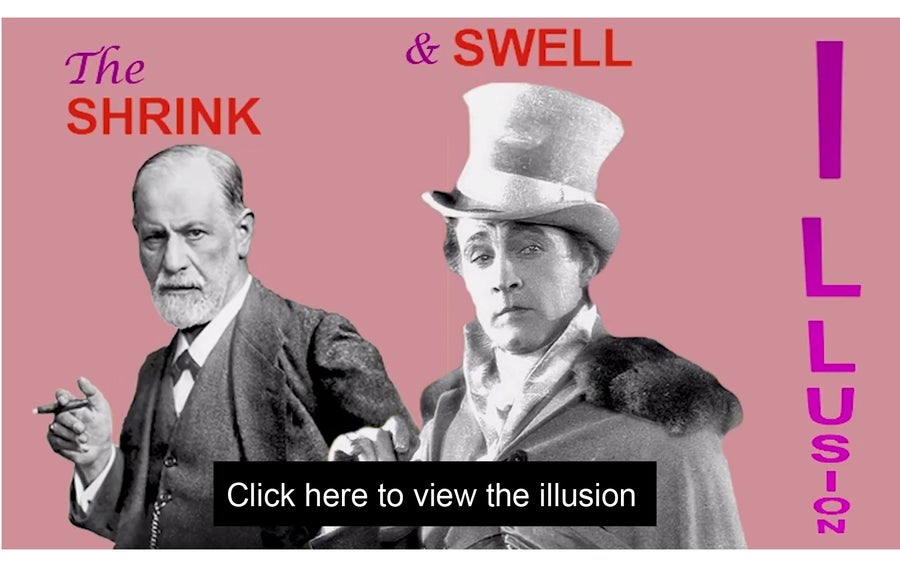
Credit: David Phillips and Priscilla Heard
In the Shrink and Swell illusion, illusion scientists David Phillips and Priscilla Heard show us that perceived motion is not just a matter of the change in position of an edge as a function of time. Motion in the brain, instead, occurs as a comparison between two surfaces. By biasing the way that the brain compares the surfaces—as objects that are growing or shrinking with respect to one another, or sliding into or out of the screen with respect to one another, or simply moving behind an aperture—we see that the brain interprets the motion as either left/right, in/out, or not moving whatsoever.
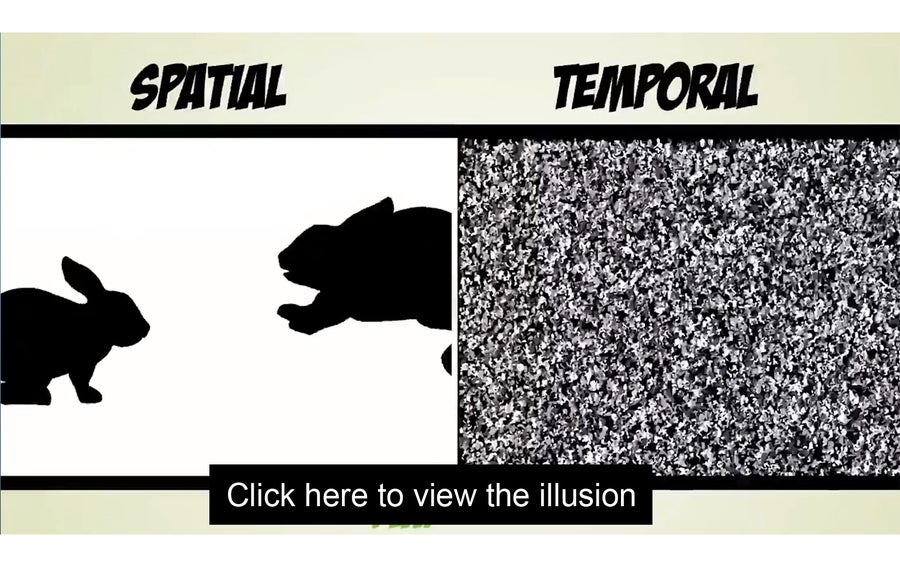
Credit: Hedva Spitzer
Not only is the direction of motion a function of the shape of the moving targets, as described above, but this illusion from Hevda Spitzer, Dana Tearosh, and Niv Weisman shows that shape can likewise be a function of motion. The brain circuits of motion and shape interact with each other to help create our interpretation of the objects we see around us.
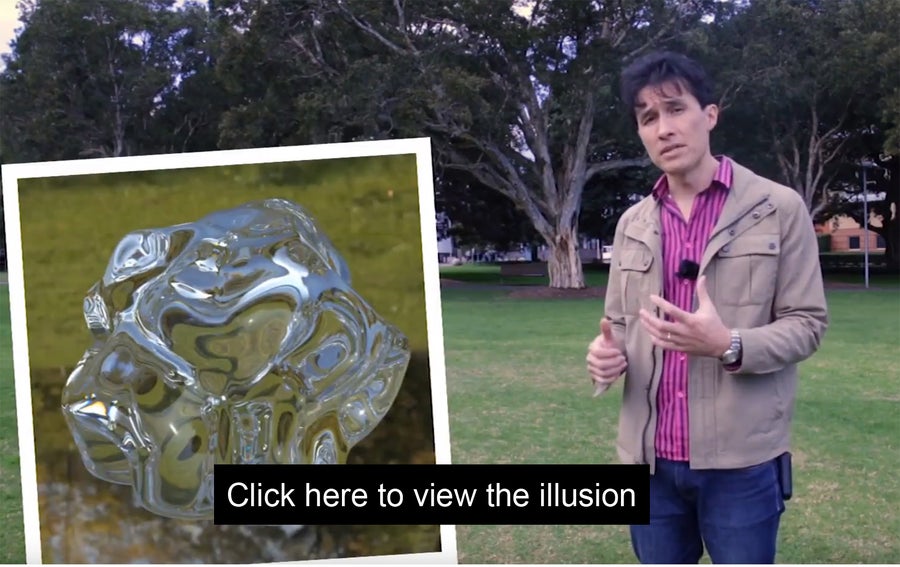
Credit: Juno Kim and Phillip J Marlow
The Material Inversion Effect draws on the insight that reflected versus transmitted light through an object is perceived by the brain differently as a function of the orientation of the light that is perceived by the viewer. From the point of view of the visual system, which evolved in daylight to see objects that were lit-up by the sun, all objects are mirrors (more-or-less). That is, the surface of every single thing either reflects light, or absorbs specific colors, with different amounts of scatter in the reflection. This leads to differently colored surfaces with different textures. The reason the Material Inversion Effect occurs is presumably because the brain interprets bright shiny surfaces to be reflections of natural light sources (i.e. the sky), and our brains are using, in part, the assumption that bright light comes from above, to interpret that surface properties and texture of the surface. So an upside down glass object looks like its made of an opaque mirrored surface (i.e. metal) rather than a transmissive substance like glass.
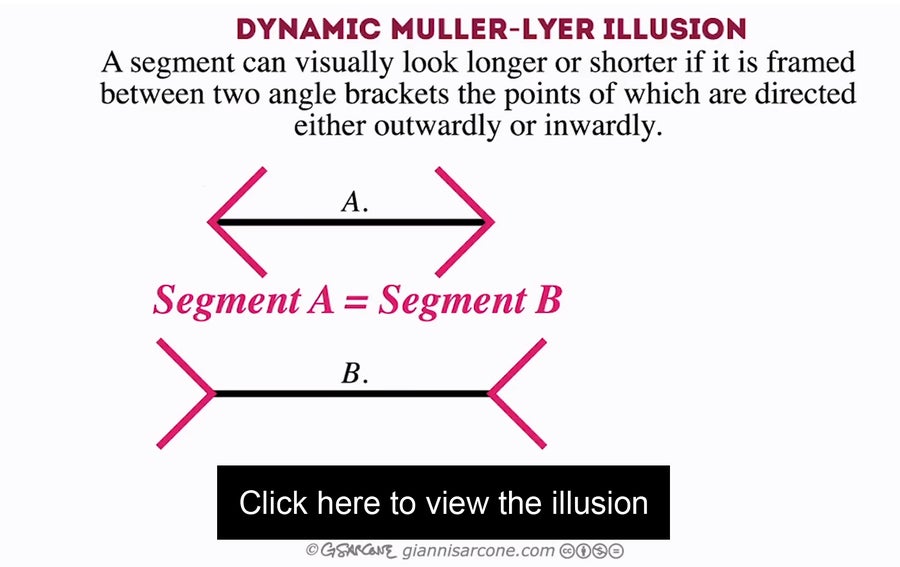
Credit: Gianni A. Sarcone
Gianni Sarcone’s Dynamic Müller-Lyer Illusion builds on the classic length illusion to reveal just how powerful it is. Moving lines interact to change length significantly, though their physical length never changes.
.jpg?w=900)
Credit: John Post
The Complementary Afterimage illusion uses color adaptation effects to weaken your sense of color, so that you experience what is like to be color blind, for a short period.
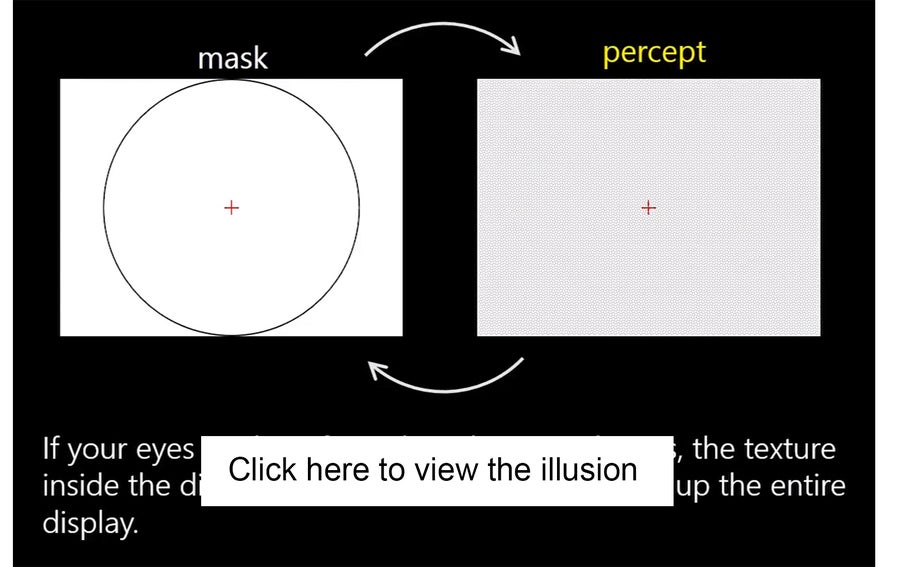
Credit: Shuichiro Taya
Filling-in is a well-known effect in vision, which allows us to see a surface as stable in color and brightness, even though our visual system only actually detects the edges of objects. Here, Taya and colleagues reveal that, under the correct conditions, the visual system will extend this artificial sense of surface texture well beyond the edges of the surfaces, to fill the available visual field.
The 1st place winning illusion in the contest will receive a $3,000 award, the 2nd place winner a $2,000 award, and the 3rd place winner a $1,000 award.
This year’s Contest coincides with the release of Champions of Illusion: The Science Behind Mind-Boggling Images and Mystifying Brain Puzzles. “Champions” features many of the best illusions from the Contest, and their neural underpinnings

Credit: Champions of Illusion Book
Champions of Illusion is available for pre-order. Proceeds will support future editions of the Best Illusion of the Year Contest.
Leading up to this year’s Contest, and to the release of Champions of Illusion, we will use this space to showcase dynamic illusions from previous editions of the Contest, as well as honorable mentions from the current competition.
